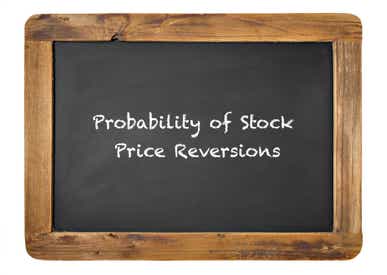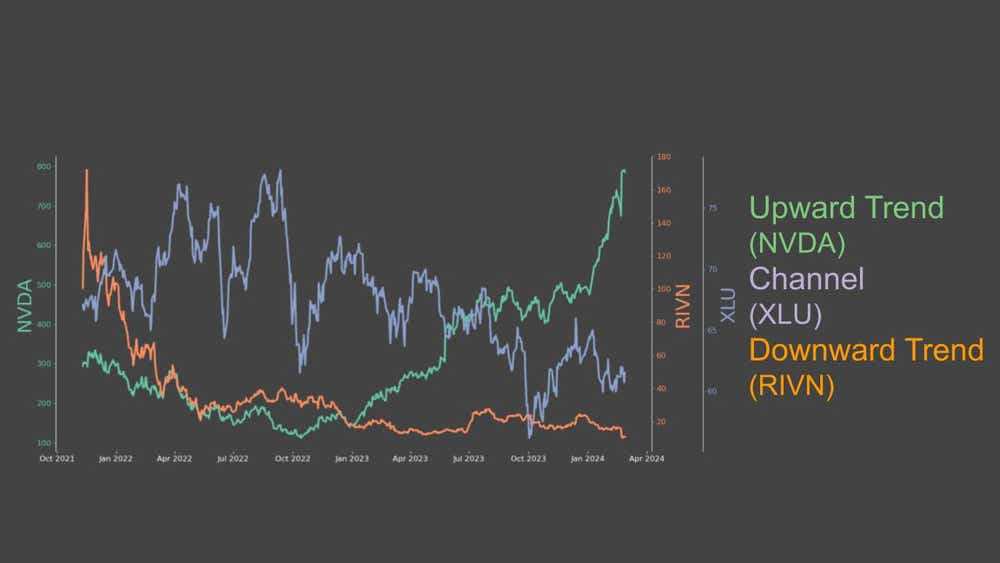Probability of Stock Price Reversions

Probability of Stock Price Reversions
By:Kai Zeng
The chance of a stock returning to its original price diminishes over time
- On average, SPY prices returned to their initial value twice within a 45-day period.
- Managing positions at 21 DTE offers a much greater chance of the stock price returning to its initial point compared to holding until expiration.
- Exiting a position before expiration increases the probability of the stock price remaining within a narrow range.
Predicting stock price movements within a specific period can be incredibly challenging because prices often exhibit random fluctuations.
Despite recent upward trends in the market, traders should always consider the possibility of price corrections and increased volatility.

For those who prefer a neutral trading strategy and aren't focused on predicting a particular direction, understanding the probability of a stock reverting to its original price or staying within a tight range is crucial.
SPY price reversion over 45 days
We analyzed the S&P 500 ETF (SPY) to determine the likelihood of price reversion within each 45-day trading cycle. The study focused on the probability of SPY returning to its initial price daily. Unsurprisingly, the probability of a stock reverting to its original price diminishes over time.
.jpg?format=pjpg&auto=webp&quality=50&width=1000&disable=upscale)
On average, SPY prices returned to their initial value twice within a 45-day period. However, if traders manage their positions at 21 days to expiration (DTE), the probability of a price reversion doubles. This insight is particularly useful for those who seek to optimize their neutral trading strategies focused on price stability rather than directional movement.
.jpg?format=pjpg&auto=webp&quality=50&width=1000&disable=upscale)
Neutral traders often wonder about the likelihood of stock prices staying within a specific range instead of hitting the exact initial price point.
Historical data reveals interesting findings for a 45-day, one-standard-deviation (1SD) SPY strangle. The average call strike price is around 4% above the underlying price, while the put strike is about 12% below.
Closing positions at 20 DTE
To gain a deeper understanding, we analyzed the probability of SPY’s price remaining within tighter ranges—1%, 2% and 3% of the initial price—both at 21 days DTE and at expiration. The data show that closing positions at 21 DTE significantly increases the likelihood of the stock price staying within these narrow ranges, compared to holding positions until expiration.
.jpg?format=pjpg&auto=webp&quality=50&width=1000&disable=upscale)
Managing positions at 21 DTE offers a much greater chance—twice as much—of the stock price returning to its initial point, compared to holding until expiration. Additionally, exiting a position before expiration increases the probability of the stock price remaining within a narrow range. This is particularly beneficial for premium sellers who profit from limited price movement rather than volatility.
By understanding these probabilities and strategically managing positions, traders can enhance their returns while reducing risk, making neutral trading a more viable and rewarding strategy.
Kai Zeng, director of the research team and head of Chinese content at tastylive, has 20 years of experience in markets and derivatives trading. He cohosts several live shows, including From Theory to Practice and Building Blocks. @kai_zeng1
For live daily programming, market news and commentary, visit tastylive or the YouTube channels tastylive (for options traders), and tastyliveTrending for stocks, futures, forex & macro.
Trade with a better broker, open a tastytrade account today. tastylive, Inc. and tastytrade, Inc. are separate but affiliated companies.
Options involve risk and are not suitable for all investors. Please read Characteristics and Risks of Standardized Options before deciding to invest in options.
tastylive content is created, produced, and provided solely by tastylive, Inc. (“tastylive”) and is for informational and educational purposes only. It is not, nor is it intended to be, trading or investment advice or a recommendation that any security, futures contract, digital asset, other product, transaction, or investment strategy is suitable for any person. Trading securities, futures products, and digital assets involve risk and may result in a loss greater than the original amount invested. tastylive, through its content, financial programming or otherwise, does not provide investment or financial advice or make investment recommendations. Investment information provided may not be appropriate for all investors and is provided without respect to individual investor financial sophistication, financial situation, investing time horizon or risk tolerance. tastylive is not in the business of transacting securities trades, nor does it direct client commodity accounts or give commodity trading advice tailored to any particular client’s situation or investment objectives. Supporting documentation for any claims (including claims made on behalf of options programs), comparisons, statistics, or other technical data, if applicable, will be supplied upon request. tastylive is not a licensed financial adviser, registered investment adviser, or a registered broker-dealer. Options, futures, and futures options are not suitable for all investors. Prior to trading securities, options, futures, or futures options, please read the applicable risk disclosures, including, but not limited to, the Characteristics and Risks of Standardized Options Disclosure and the Futures and Exchange-Traded Options Risk Disclosure found on tastytrade.com/disclosures.
tastytrade, Inc. ("tastytrade”) is a registered broker-dealer and member of FINRA, NFA, and SIPC. tastytrade was previously known as tastyworks, Inc. (“tastyworks”). tastytrade offers self-directed brokerage accounts to its customers. tastytrade does not give financial or trading advice, nor does it make investment recommendations. You alone are responsible for making your investment and trading decisions and for evaluating the merits and risks associated with the use of tastytrade’s systems, services or products. tastytrade is a wholly-owned subsidiary of tastylive, Inc.
tastytrade has entered into a Marketing Agreement with tastylive (“Marketing Agent”) whereby tastytrade pays compensation to Marketing Agent to recommend tastytrade’s brokerage services. The existence of this Marketing Agreement should not be deemed as an endorsement or recommendation of Marketing Agent by tastytrade. tastytrade and Marketing Agent are separate entities with their own products and services. tastylive is the parent company of tastytrade.
tastyfx, LLC (“tastyfx”) is a Commodity Futures Trading Commission (“CFTC”) registered Retail Foreign Exchange Dealer (RFED) and Introducing Broker (IB) and Forex Dealer Member (FDM) of the National Futures Association (“NFA”) (NFA ID 0509630). Leveraged trading in foreign currency or off-exchange products on margin carries significant risk and may not be suitable for all investors. We advise you to carefully consider whether trading is appropriate for you based on your personal circumstances as you may lose more than you invest.
tastycrypto is provided solely by tasty Software Solutions, LLC. tasty Software Solutions, LLC is a separate but affiliate company of tastylive, Inc. Neither tastylive nor any of its affiliates are responsible for the products or services provided by tasty Software Solutions, LLC. Cryptocurrency trading is not suitable for all investors due to the number of risks involved. The value of any cryptocurrency, including digital assets pegged to fiat currency, commodities, or any other asset, may go to zero.
© copyright 2013 - 2025 tastylive, Inc. All Rights Reserved. Applicable portions of the Terms of Use on tastylive.com apply. Reproduction, adaptation, distribution, public display, exhibition for profit, or storage in any electronic storage media in whole or in part is prohibited under penalty of law, provided that you may download tastylive’s podcasts as necessary to view for personal use. tastylive was previously known as tastytrade, Inc. tastylive is a trademark/servicemark owned by tastylive, Inc.